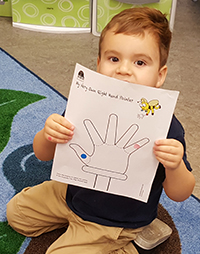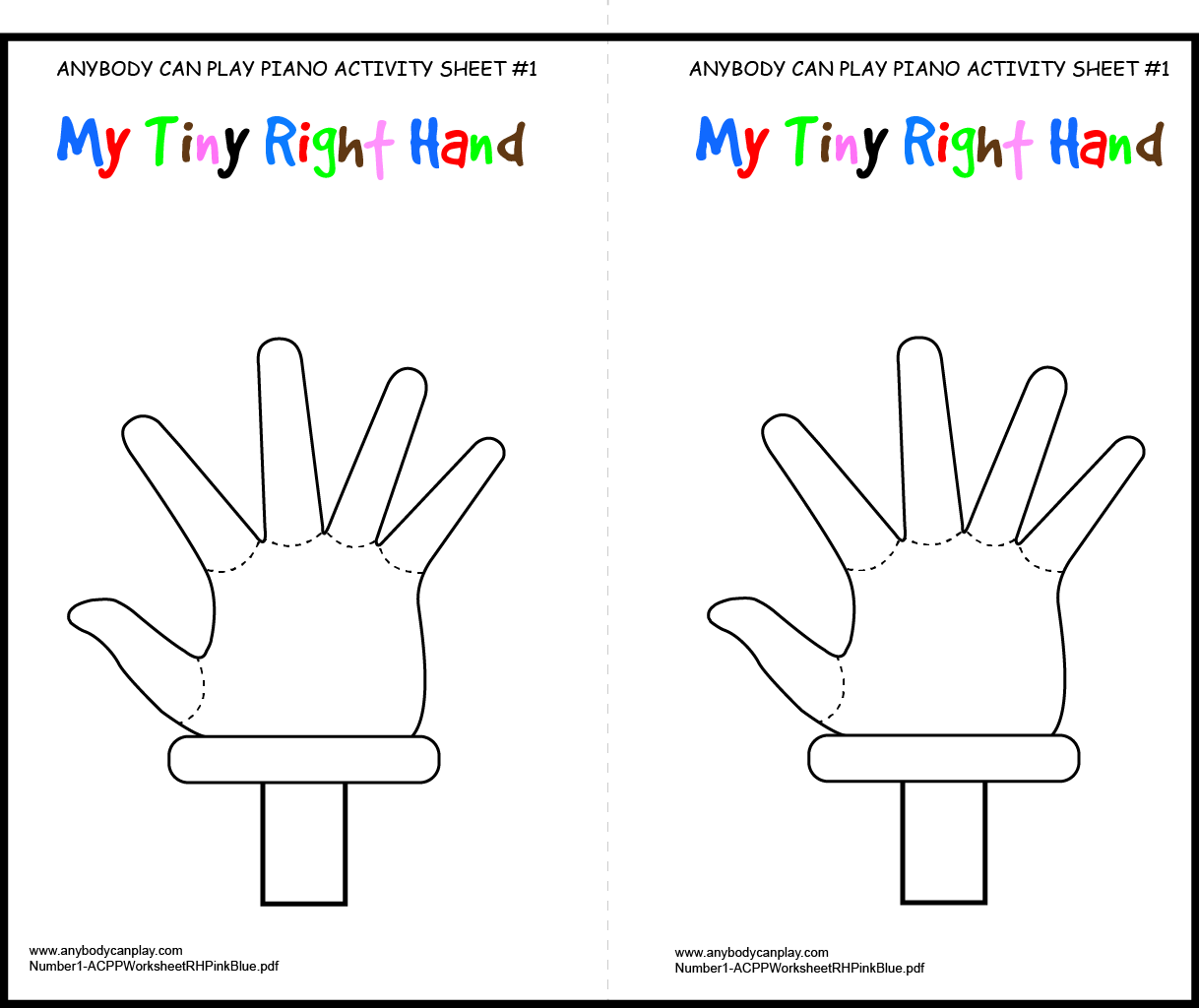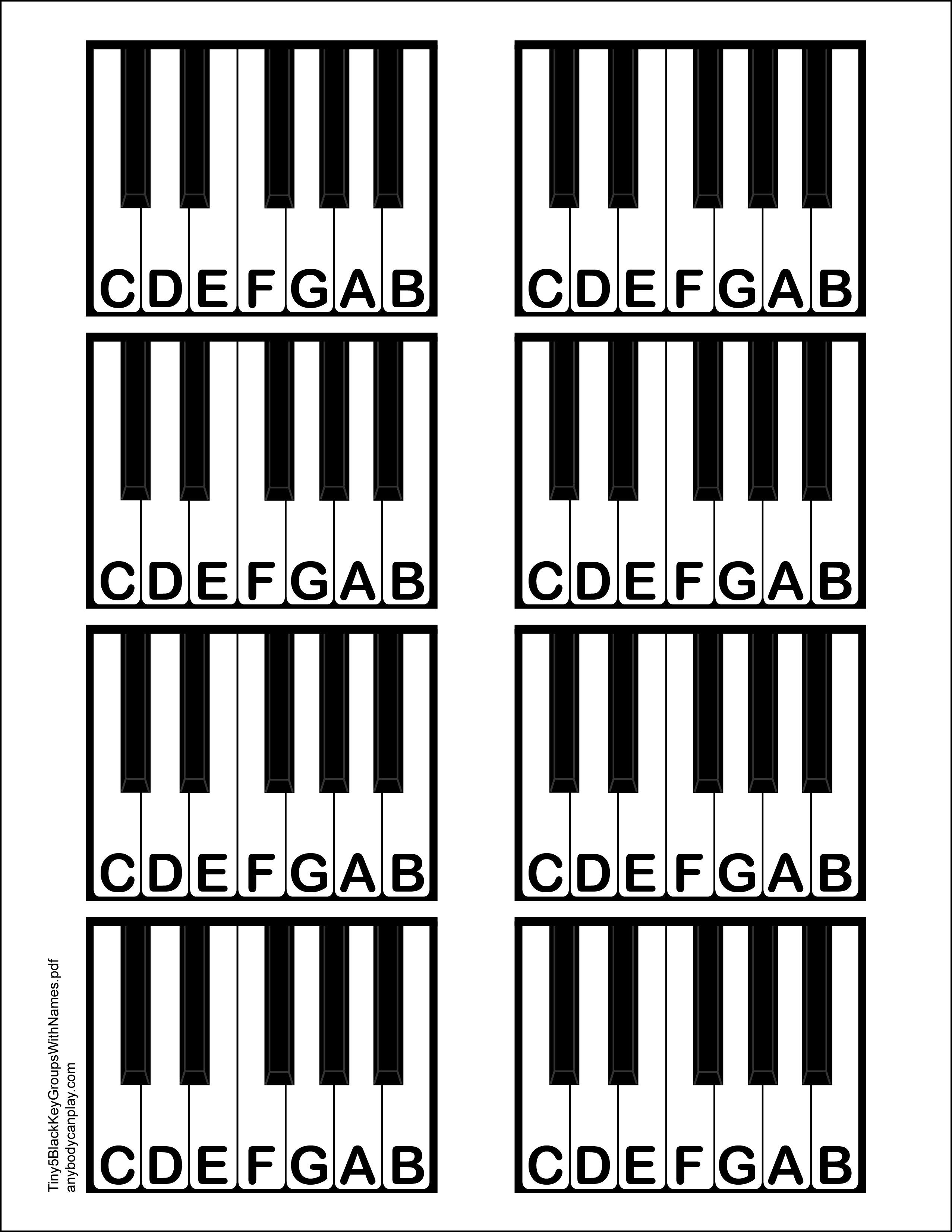Anybody Can Play PIANO
WHY USE FINGER COLORS?
 I started teaching very young children in the early 70's in a way that parallels language.
I started teaching very young children in the early 70's in a way that parallels language.
 Most 3-year-old children recognize colors, so I opted to use color for coding fingers to keys.
I also wanted the children to consistently use the same fingering for each song they learned in order to increase dexterity and train the memory reflex.
Most 3-year-old children recognize colors, so I opted to use color for coding fingers to keys.
I also wanted the children to consistently use the same fingering for each song they learned in order to increase dexterity and train the memory reflex.
I have been asked many times why I didn't just use finger numbers. Even if a child does not yet recognize numbers, it is quite easy to teach them the recognition of numbers 1 through 5. However, finger numbers go in opposite directions from one hand to the other which is confusing...particularly when playing a melody with both hands simultaneously - which I do early on. (The color-coded arrows on the Anybody Can Play PIANO app do also have the finger numbers on them.)
 I try to train both hands equally because I have seen far too many "right handed" pianists. By using colors that go left to right in both hands a young child can use the same sequence of colors to learn to play a song with each hand alone, then both hands in parallel. By using colors I am also able to introduce contrary motion as well as movement around the piano keyboard - increasing more muscle memory
I try to train both hands equally because I have seen far too many "right handed" pianists. By using colors that go left to right in both hands a young child can use the same sequence of colors to learn to play a song with each hand alone, then both hands in parallel. By using colors I am also able to introduce contrary motion as well as movement around the piano keyboard - increasing more muscle memory
Playing songs on the piano keyboard parallels "speaking" in language. The color coding allows a beginner child to learn to play many songs on the piano - increasing dexterity - when it is too soon to introduce reading. What I always found hilarious was that my older students (including adults) always preferred to begin their piano study the same way as the really young students. I guess their hands were young!
As soon as children are able (or interested) reading is introduced. For some this is virtually simultaneous with the learning to play "regular" "songs with color coding. A beginner is able to learn to play way more than he/she can "read" for quite some time, so waiting for the reading and playing to be on the same level slows down the process of playing - sometimes so considerably that a child loses interest and quits. Remember, in language we are allowed to speak long before we are able to read and speak at the same level.
I learned to read music at age 4 watching my mother play the melody of songs I was learning to sing, but no one knew I was "reading" until my parents talked a piano teacher into giving me lessons at age 5. I shocked everyone by playing through the first 3 books in 3 weeks even though I had never played anything on the piano before, and all throughout my life I have been considered an exceptional sight reader.
I finally remembered how I had learned to read the music without even knowing those notes on the page and the keys on the piano had names. I just knew that when I saw a certain note in a certain place on the page it indicated a certain key on the piano. So, my method of teaching "reading" of music notation is a bit different from most. If you click on the Notation part of the Anybody Can Play app you are taken to "Silly Songs". Level One introduces only 3 notes that are re-arranged every time the "Silly Song" is played. When the next level is added, more notes are added to the existing notes already learned.
Never is the learner asked to name the note before playing it. I consistently told the teachers in my staff to have children look at the note, play the key, then, if you wish, say the name of the note/key. By skipping the "translation" step of looking at a note and naming it before playing the key, the ability to "read" becomes much faster. It is really hard not to "name" a note when looking at it when dealing with beginner students, but by being careful and following the "look, play, then name" procedure my staff and I have produced some really good sight readers!

By the way, I always do have the children learn the names of the keys on the piano early in their learning process. The names are for convenience. I tell them it is much easier to call a child by his/her name, then have to say, "the boy wearing the blue tee shirt next to the little girl with the pink ribbon in her hair!" And, it is much easier to say "D" then saying "the white key in between the set of 2 black keys"!
Colors also make it possible to use the many different fun activity sheets, games, and videos available on this website....all free.
To subscribe to the Anybody Can Play PIANO app in Windows 10 click here.
